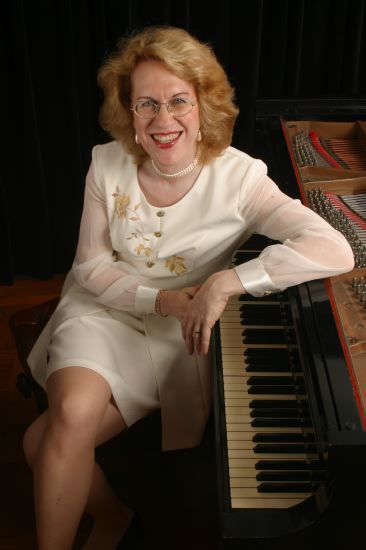Buechner wraps Key Pianists season with superb and offbeat Japanese program

Sara Davis Buechner performed a program that spotlighted Japanese music Thursday night at Weill Hall.
There are 8,000,000 musicians in the naked city–or sometimes it seems like it–but nowhere near the same number of available gigs.
For the lucky few, there are series like Key Pianists, which dip into what seems like a bottomless talent pool in New York and pull out impressive musicians dedicated to fascinating, less familiar corners of the classical repertory. Their current season came to a close Thursday night at Weill Recital Hall with a concert from pianist Sara Davis Buechner that was equal parts excellent and refreshing.
Buechner is a deeply experienced musician with the kind of technique frequently heard downstairs in Carnegie’s main hall; agile, powerful, and exciting. But what really sets her apart is found from the neck up—the program she put together was as thoughtful and superb as her pianism.
Three of the four pieces were from Japanese composers who are barely known, if at all, in the United States. The fourth work was Ibert’s familiar Histoires, but with the entirely new concept of being paired with a mime dancer.
Buechner began with Ten Etudes, which she commissioned from composer Yukiko Nishimura, who was in attendance. These showed the influence of both French music and American jazz, something that developed into a specific theme in the concert and that is a notable feature of much modern and contemporary Japanese classical music.
The ten short pieces showed an energetic, kaleidoscopic imagination, with specific solo features for the individual hands, the impressionism of “Snowy Sky,” the I’ll-chase-you-you-chase-me antiphony of “Hide-and-Seek,” and a wild “Tango.” These were studies in both compositional expression and piano technique, and Buechner played through every challenging moment with an infectious vitality. Her ease with every idiomatic element, from the Debussyian extended chords to the jazzy progressions and punchy bass lines that had a touch of Chick Corea, brought out the depths of the music.
Kouji Taku’s Variations on a Theme of Poulenc brought the French theme to the fore. Based on one of Poulenc’s most insouciant melodies from his Mouvements Perpetuels, this was witty, often brilliant, music, with an appealing dance feel, Gershwinesque touches, and a brief nod toward “Sophisticated Lady.”
Buechner again was an ideal interpreter. Her playing was scintillating, full of bright attacks and physical energy. There was never the sense that she was just powering through everything with sheer sensationalism—the forceful exactitude of her playing was driven by a commitment to express what mattered most in the music.
After intermission, dancer Yayoi Hirano joined Buechner for Ibert’s Histoires. For each section of the piece, Hirano wore a different Noh mask of her own design, each a still visage around which her movements turned.
The components of the performance were simple, with Ibert’s colorful, spare evocations of place accompanied by Hirano’s basic, straightforward pantomimes. She became “Le vieux mendiant,” and turned the clichéd invisible box into something charming for “Le cage de cristal.” Her vernacular sincerity, joined with Buechner’s identical approach to the music, turned the performance into a compelling mystery, something with clear edges and an unplumbed center.
At the end, the intense drama of Yoshinao Nakada’s outstanding, mid–20th century Sonata for Piano was the perfect companion for Buechner’s playing.
Nakada’s biography has the almost unbelievable and agonizing detail that he was one of the few kamikaze pilots to survive World War II. One could not help but think that led to this sonata, with its overflowing need to express itself and its brittle emotional carapace. It began with a fanfare-like theme—again, descending from Debussy—that reappeared throughout in changing contexts of harmony, rhythm, and mood.
Change is the key word; the sonata seemed beset by intrusive thoughts that pushed it from one drastic point almost immediately to the next. A roiling agitation was its steady state. Yet everything in the performance moved forward coherently and logically via Buechner’s clear thinking and dynamic playing. She served both the current musical event and looked forward in knowing anticipation to the next. The performance had a strange and destabilizing thrill.
Buechner begged off playing anything more, saying, “An encore is an unnecessary delay before the first martini.” Instead, she read the lyrics to Nakada’s famous song “Dream of Summer,” first in Japanese, then in English. And finally, she delivered her own recent haiku, in Japanese and then in a vernacular translation which went:
The New York Mets stink
But I’m still a fan


